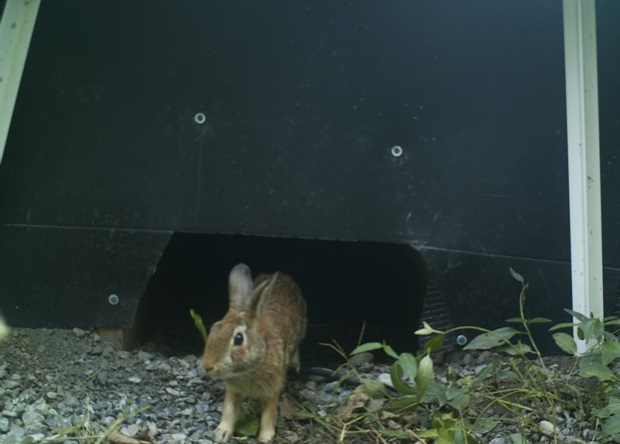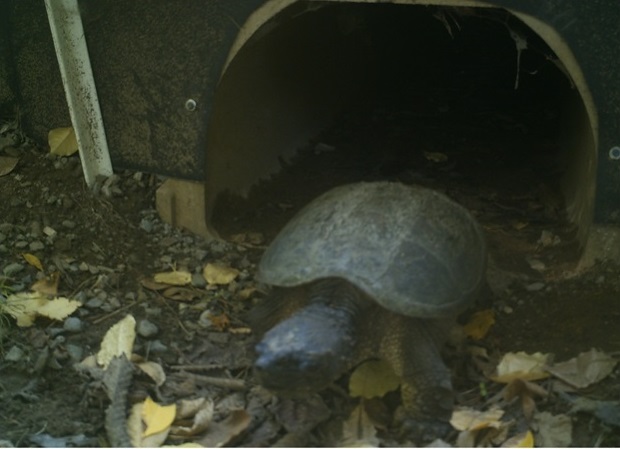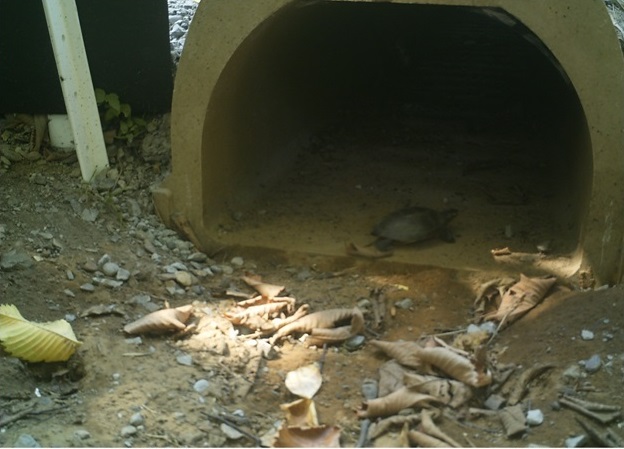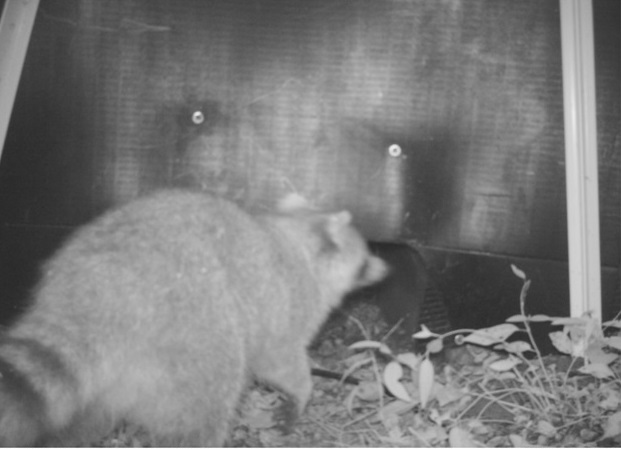On the road again? Hopefully not!
I am sure many people have questions about the tunnels and the fencing that was installed last summer along the edges of the main road in Presqu’ile. How do they work? Do they work well and how do we know? What have we seen so far? All of these are great questions and if you have asked these questions before, here are some of those long awaited answers!
How do they work?
The combination of the fencing and tunnels under the road protect the animals of Presqu’ile in two ways. The first, and most obvious is that animals are often struck by vehicles when they attempt to cross the road. The purpose of the fence is to prevent animals from getting on to the road in the first place. You might ask, well, what about those animals that need to cross the road to get to some other important food source or habitat? Another great question! This is the critical reason why, along with the fence, two tunnels have been installed under the road. The fence works together with the tunnels to not only keep them out of traffic, but direct them towards the tunnels, which are a safe crossing point.
Do they work well and how do we know?
This is a trickier question to answer. We have been working in the park for almost five summers now (I know hard to imagine!). Over the first four summers, we collected information about animals on the road in two areas. One area is the section of road which is now fenced, and the other is located outside of the park, along the Presqu’ile Parkway causeway. Now that the fence is in place, we can collect information in the same way as before and compare it to previous years, as well as to the location outside the park that does not have any fencing. So we can’t definitively say the fence and tunnels are ‘working’ quite yet, but we are hopeful that the analyses we complete in the fall will confirm their effectiveness. Surveys along the road are only part of what we do. We have also been catching turtles and snakes since the beginning of this study in order to give them a tag (much like a tag your dog or cat would get from the vet). Inside the tunnels, we have installed tag readers that run 24/7 and allow us to know exactly which animals are using the tunnels, and when they are crossing. We have also installed cameras at each end of the tunnels in order to detect any animals we have not previously encountered.
What have we seen so far?
So far the fence seems to be doing its job! We have seen virtually no turtles in the fenced section, and the numbers of amphibians seems to be dramatically lower than in previous years. Again, we still need to analyze the data we are collecting, but it seems promising so far! We do seem to still be finding several snakes on the road in the fenced area, but this problem will likely be remedied in the future by burying the areas of the fence where two sections meet, which currently creates a small gap. Additionally, results from last year’s Honours research project, conducted by Rachel Dillon, demonstrated that snakes seem to be willing to use the tunnels, even when presented with other options – again great news!
We have had several animals using the tunnels so far (pictures below). We have recorded Snapping, Painted and Blanding’s Turtles using the tunnel, as well as several species of snake, amphibian and small mammal. Stay tuned for more updates as the summer progresses, and as we begin to analyze the data we have collected!

Cottontail Rabbit exiting tunnel

Big Snapping Turtle exiting tunnel

Painted Turtle exiting tunnel



